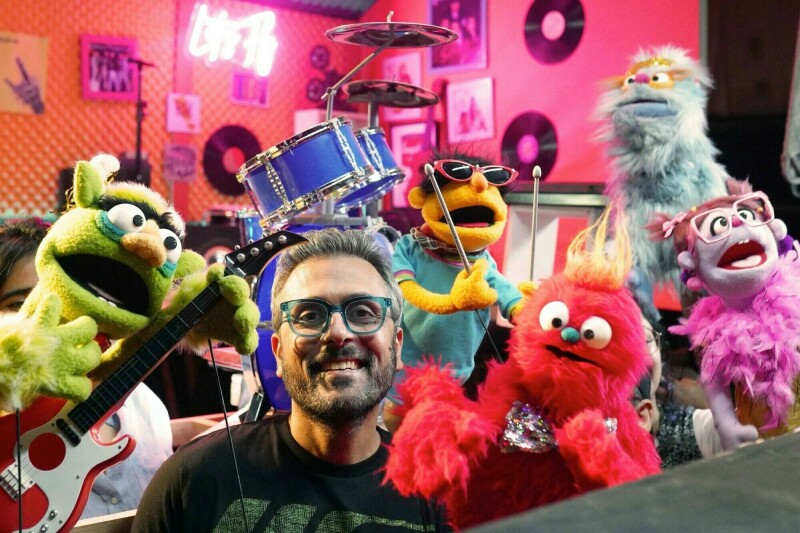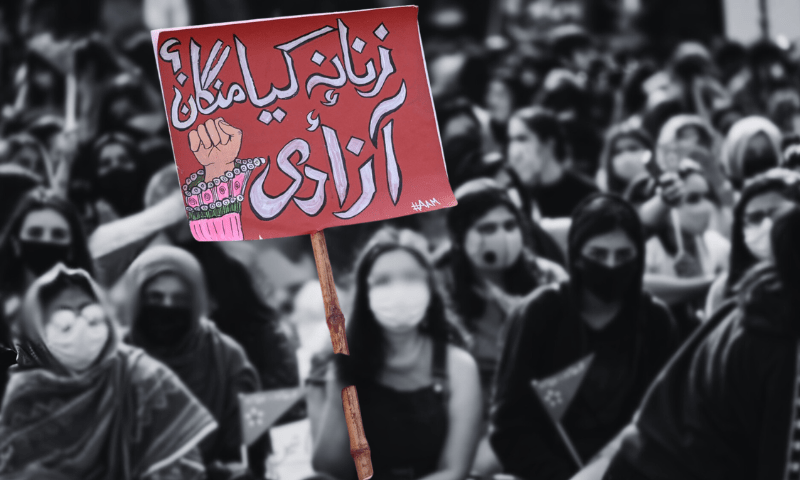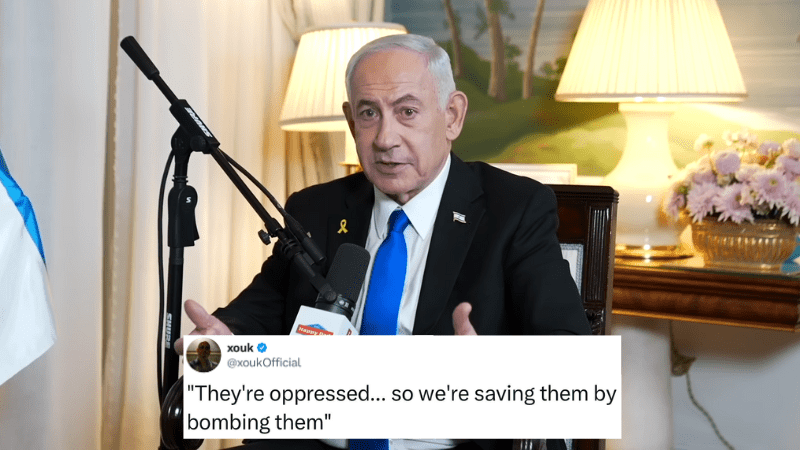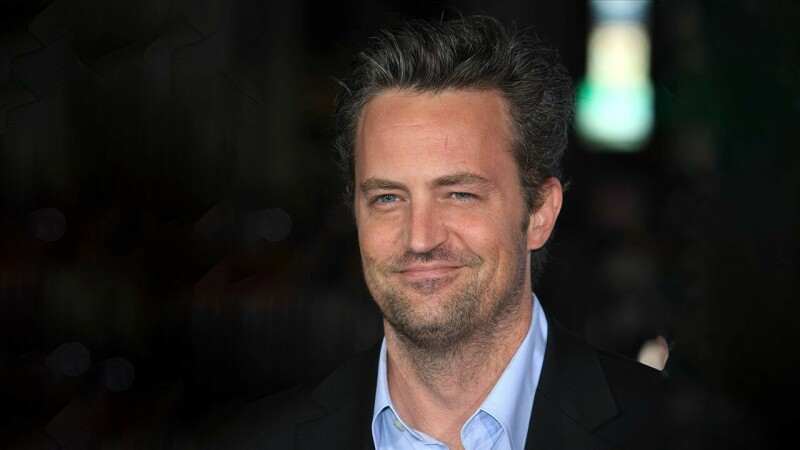Bollywood's complicated relationship with Lahore is on full display in Kalank
Kalank, directed by Abhishek Verman, is an extravagant exploration of love and infidelity in pre-partition India, in the city of Lahore.
It takes a fragment of history and makes it unbelievable - a thing of fiction and legends, and you are left to question whether the events that preceded the eventual partition of India were as fantastical and oddly colour coordinated? Our collective memory doesn't betray us and perhaps that’s why Kalank seems so irritatingly unbelievable.
The plot
In the fictional neighborhood of Husanabad, the dying wife of a wealthy man organises her husband’s wedding to the beautiful young girl, Roop, played by Alia Bhatt. Bhatt's character continuously questions the ridiculousness of the situation, and the actress might have too, but we are all forced to move along for the sake of the narrative. Roop then becomes deeply interested in learning sangeet from Bahaar Begum, played by Madhuri Dixit, who has a kotha at the infamous neighbourhood of Hira Mandi.

Just like the two different worlds of Hira Mandi and the other unnamed neighborhood of Lahore are not allowed to collide in the movie, the result of tensions among the two countries has called for a general cultural boycott to minimise the collision in reality as well.
The characters in Kalank seem to deliberately avoid using the name of Lahore, but the filmmakers appropriate the city’s history to capitalise on its emotional value. While the responsibility on Dharma Productions to depict the events of partition in Lahore authentically is arguable, the audience does expect a level of self-awareness from the film in its appropriation of a tragic event in the past.

But the fear of humanising the experience of a Lahori lends Verman to use the intricate costumes of Manish Malhotra and the monumental set design of Amrita Mahal to make the events more palatable for the contemporary audience.
The film divides Lahore into two areas: one where the rich Chaudhary lives, and the other Hira Mandi.
The film lives up to its promises of grandeur and luxurious set and art design. However, its overwhelming attention to cosmetic detail overshadows the story and the characters. The director seems heavily inspired by Sanjay Leela Bhansali but Kalank’s story lacks a compelling narrative and the audience is left with a chaotic display of emotions, colours, and an overindulgent exuberance.
Roop falls in love with a lohaar, Zafar, who resides in the Hira Mandi area. The neighbourhood is introduced as the forbidden land for the respectable people of society. The film divides the city into two areas: one where the rich Chaudhary lives, and the other Hira Mandi. In a bizarre sequence, the characters suddenly find themselves amidst a cliffside village in snow-capped mountains where Varun Dhawan’s character, Zafar, fights a terribly rendered CGI bull to win Roop’s heart.
The sequence highlighted the film’s continuity errors and further confused me as a viewer given that there are no mountains around Lahore. But setting the story in Lahore is a convenient choice that allows the makers to sell this fable of love set in a manicured fantasy land.
Bollywood can't avoid Lahore, but it can't fully claim it either
The use of Lahore to evoke nostalgia is an age-old Bollywood trope - a nostalgia that is collectively felt among the contemporary Indian audience. The location choice also allowed the director to use the violence of the partition of India as a backdrop to his love story that was guaranteed to tug at the heartstrings of the audience. Bhaati did burn. And so did Lohari. But the fires of communal violence in Lahore did not inquire of the religion of the victims it engulfed.

Here those events seem to be trivialised to serve as the antagonist of a singular love story, which caricatures the characters and makes the wider national history seem one-dimensional. The writers Abhishek Verman and Shibani Bathija employ the Hindu vs Muslim narrative, which is one of the most popular master-narratives of South Asian historiography with little space for nuances except for in the last sequence. The residents of pre-partition Lahore did not occupy such different neighbourhoods just based on their religious affiliations, and the current political landscape is incorrectly imposed on history for our convenience.
Lahore is one of those cities that epitomise the sophistication of South Asian cultural production. The conception of Chandigarh was an attempt to fill the void caused by the loss of the Punjabi capital, Lahore. The Hindi film industry capitalises on this loss. The industry caters predominantly to a small section of the North Indian audience, where the last generation of Indian Lahoris is still alive. The dynastic memory, coupled with a wider national nostalgia of the past times, makes for a marketable film.

While the Hindi film industry is maintaining a boycott on Pakistani artists, it still produces big budget movies set in Lahore that transcend the boundaries exaggerated by description. In the past years, movies such as Veer Zaara, Happy Bhaag Jayegi, Ae Dil Hai Mushkil (edited due to fear of backlash), had characters that belonged to the city of Lahore, and interestingly one of the most famed Bollywood movies, Mughal-e-Azam, was based on a legendary courtesan of Lahore. Cultural exchange is inevitable, and the ongoing cultural contact is contemporaneous with ancient times.
Kalank plays on the age-old Bollywood tropes- an inter-religion marriage, a Muslim tawaif, and exploiting the cultural memory and trauma of the Indian partition.
Thomas Moore, an Irish poet, in his poem Lallah Rukh (1818), gives a detailed description of the princess’s procession into Lahore, where she stops on her way to Kashmir. Anna Suvorova, a cultural topographer of Lahore characterises the description as just another example of stereotyped Anglophile literature on Muslim cities. You can put any Muslim city’s name next to this description, and it wouldn’t matter.
Kalank falls prey to the same stereotyping as the city’s skyline is shown littered with domes, minarets, jharokhas, arches, and mosques, and could be understood to be any other city in Pakistan, India or the Middle East. While watching the film as an actual Lahori, I was very cognisant of the gaze of the writer towards Lahore. The makers are guilty of the same gaze with which Thomas Moore wrote about Lahore.

Kalank plays on the age-old Bollywood tropes- an inter-religion marriage, a Muslim tawaif, and exploiting the cultural memory and trauma of the Indian partition. It exhibits complex emotions and manages to display a commendable achievement in terms of the scale of the filmmaking and art design.
However, its attempt at a lyrical and a poetic telling of a tragic love story set in politically unstable times fails at the expense of its ambition in grandiosity.
‘The ancient whore’, wrote Bapsi Sidhwa about Lahore, and the city’s analogy to a tawaif is an old one. But Abhishek Verman, the director of Kalank loses out on the great potential of this analogy. Instead, he opts to waste the setting of the story, and great talent of Madhuri Dixit whose ill-timed dance numbers are awkwardly crammed into the storyline. Lahore is often called an endless dinner party with an unpredictable number of guests, then Kalank is a seemingly endless love story with a parade of farcical characters and situations.













Comments